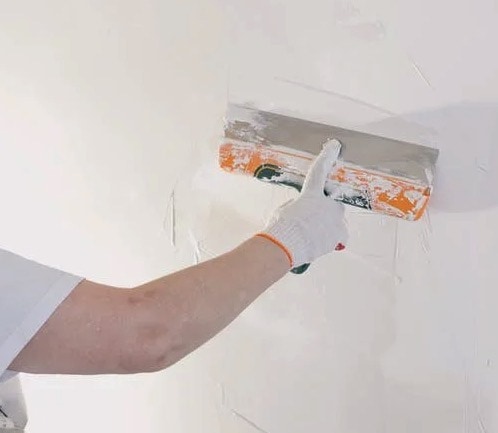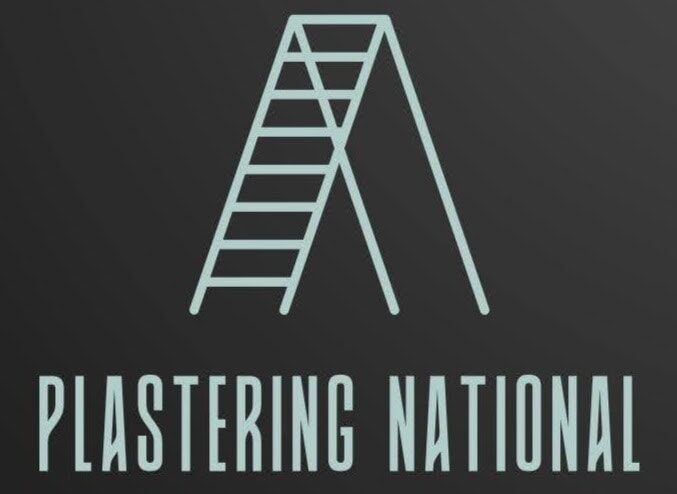Owners of older homes often decide whether to preserve their property’s classic features or replace them with more modern materials. One of the most common dilemmas is whether to replace plaster walls with drywall.
This can be especially challenging in homes where plaster and lath walls have unique textures that are difficult to replicate with modern drywall. Replacing plaster with drywall is a complex task.
It’s messy and time-consuming, requiring careful planning and attention to detail. However, for those who decide to take on this challenge, here’s a guide on safely removing plaster and replacing it with drywall.
Let’s get straight to the point.
Replacing plaster with drywall in older homes is messy and time-consuming. Still, it may be necessary if the plaster is heavily damaged or electrical or plumbing work is needed.
While plaster offers better insulation, soundproofing, and fire resistance, drywall is easier and more affordable to install. The process involves removing the plaster, pulling down the lath, and installing drywall panels.
It’s important to take safety precautions, especially if lead or asbestos are present. Costs vary, with DIY projects starting at around $500, while professional installations can range from $1,020 to $2,800.
Assessing The Need For Replacement

It is important to evaluate whether the plaster must be replaced before making any decisions. Plaster is generally considered a higher-quality material than drywall.
It offers better soundproofing, insulation, and fire resistance. However, there are situations where replacing plaster with drywall makes sense, such as when:
- Extensive electrical or plumbing work needs to be done behind the walls.
- The plaster is heavily damaged and would be too costly to repair.
- Lead paint or asbestos is present, requiring the removal of the walls.
Save The Plaster If Possible
If the plaster is in good condition, it might be worth saving. Repairing plaster is often less expensive than replacing it, and it preserves the home’s original character.
Consider keeping the plaster if:
- The damage is minor and can be repaired without significant cost.
- Your home has interesting architectural details or shapes that would be difficult to recreate with drywall.
- You want to maintain the fire resistance, soundproofing, and insulation properties of plaster.
If the plaster is in bad shape, replacement may be necessary.
Safety Precautions
Proper safety precautions are essential before starting any plaster removal project. Plaster dust can contain harmful substances such as lead or asbestos, posing serious health risks.
Here are the basic safety measures to follow:
- Wear Protective Gear: This includes safety goggles, a face mask (especially one designed for lead or asbestos), and full-body protective clothing.
- Vacate the Area: Move furniture and other items out of the room or cover them with plastic sheets if this isn’t possible.
- Seal the Room: Close off doors and windows with plastic sheeting to prevent dust from spreading to other house areas.
- Turn Off HVAC Systems: To prevent dust from circulating through the house, turn off any heating, ventilation, or air conditioning systems.
- Inspect for Lead and Asbestos: If your home was built before the 1980s, it’s essential to have the plaster tested for lead paint and asbestos. If either is present, consult a professional for safe removal.
Tools And Materials Needed
To remove plaster and lath and replace it with drywall, you’ll need the following tools and materials:
- Safety gear (goggles, mask, gloves, protective clothing)
- Crowbar
- Hammer
- Spade or flat scraper
- Utility knife
- Drywall sheets (4×8 or 4×16, depending on the size of your walls)
- Drywall screws (2-inch)
- Power drill
- Plywood (for protecting the floor)
- Plastic garbage cans or dumpsters (for debris removal)
Step-By-Step Guide To Removing Plaster
1. Prepare The Room
Before you begin tearing down walls:
- Remove all outlet covers, light fixtures, and other electrical components.
- Place plywood on the floor to protect it from falling debris.
- Set up garbage cans or a dumpster to collect the plaster and lath as you remove it.
2. Break The Plaster
Start at the top of the wall and make a hole in the plaster with a hammer or crowbar. Once you’ve broken through, insert the crowbar into the hole and pry off sections of plaster.
Work from the top down, removing large sections of plaster at a time. Be prepared for a lot of dust and debris.
3. Remove The Lath
After removing the plaster, you’ll need to take down the lath. These are the wooden slats that support the plaster. Carefully pry them off the studs using a crowbar or hammer.
Be cautious, as the wood may be brittle and break easily.
4. Clean Up The Debris
Once all the plaster and lath have been removed, sweep up any dust and debris with a shovel. Make sure the area is clean before moving on to the drywall installation.
Installing Drywall
Once the plaster and lath have been removed, you can install drywall. There are two main options for installing drywall:
- Install drywall over the existing lath (if it’s still stable).
- Remove plaster and lath, and attach the drywall directly to the studs.
1. Check And Secure The Lath (If Keeping It)
If you install drywall over the existing lath, ensure the lath is securely fastened to the studs. Use nails or screws to reattach any loose pieces.
Clean the lath to remove dust and debris before hanging the drywall.
2. Cut The Drywall
Start by measuring the wall’s height and width. Using a utility knife, cut the drywall to size.
Score the surface of the drywall, then snap it along the scored line for a clean break.
3. Install The Drywall
Begin at the top of the wall, installing drywall panels horizontally. Make sure the edges of the panels are centred on the wall studs.
Use 2-inch drywall screws to attach the drywall to the studs, placing screws every 6 inches along the edges of the panels.
4. Finish The Wall
After all the drywall panels are installed, tape over the seams with drywall tape and cover them with joint compound.
Once the compound dries, sand it down until smooth, then prime and paint the wall as desired.
Costs Involved
The cost of removing and replacing plaster with drywall can vary widely depending on the project size and whether you hire a professional or do it yourself. Here’s a rough breakdown of costs:
- Drywall Panels: Depending on the size and type, you can expect to pay around $10 to $20 per panel.
- Screws, tape, and joint compound: $50 to $100 for a medium-sized room.
- Protective gear and tools: $100 to $200 if you still need to own these items.
- Lead and asbestos testing: This can cost several hundred dollars, depending on the size of your home.
If you hire a professional, the drywall installation costs range from $1,020 to $2,800, depending on the room size.
When To Switch From Plaster To Drywall?

In some cases, replacing plaster with drywall makes more sense. For instance, if you plan to remodel an older home, gutting the walls and replacing them with drywall is often more efficient and cost-effective.
Additionally, if you’re updating the electrical or plumbing systems, drywall may be a better choice because it allows easier access to the wall studs.
On the other hand, if the plaster walls are in good condition and only need minor repairs, it might be worth saving them to maintain the home’s character.
Conclusion
Replacing plaster with drywall is a significant project that requires careful planning, the right tools, and a good understanding of the process. While it can be time-consuming and messy, the result is often a smoother, more modern finish that can be easier to maintain.
Before starting, weigh the pros and cons of replacing plaster with drywall. If you decide to proceed, take the necessary safety precautions and be prepared for dust and debris. Finally, consider the costs involved in terms of materials and time before making a final decision.
Frequently Asked Questions About Plaster
Why Is Drywall Better Than Traditional Plaster Walls?
The biggest benefit is that drywall is more stable than plaster. So even though settling cracks will take place occasionally, drywall usually has an easier time withstanding these cracks than plaster.
Is It Hard to Knock Down a Plaster Wall?
Removing it or knocking it down is not hard, but it sure is messy. So you’ll want to take precautions to ensure it’s done safely.
Is Plaster More Expensive Than Drywall?
Plaster costs more than drywall.
Because plaster requires more of a specialized skill than drywall installation and takes longer to complete, the labour alone will usually run about three times higher or more than drywall installation. The material costs are comparable.
Should I Remove Plaster or Drywall Over It?
If you want to cover an unsightly wall where the plaster is in good shape, go ahead and attach drywall over the plaster. If you have long-term plans for the house that include updating wiring and insulation, a good time to do those projects is right after plaster removal when the stud spaces are open.
Can You Drywall Mud Over Plaster?
All-purpose joint compound is a building material drywall finishers use to spackle, or mud, a drywall installation. All-purpose joint compound adheres well to most surfaces, so you can use it to make repairs on plaster walls.

